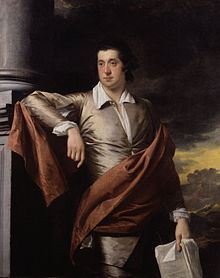Thomas Day was a British author and abolitionist. Born in London, his father died when he was an infant, leaving him wealthy. Following a bout of smallpox he was sent to Charterhouse School and though he went on to study at Corpus Christi College, Oxford, where he was known for his debating skills, he never graduated.
He met Lunar Society member Richard Lovell Edgeworth and the pair decided to educate Edgeworth’s son, Dick, in the style favoured by the philosopher Jean-Jacques Rousseau.
 After failing to find the perfect wife (several women including Honora Sneyd, who went on to marry Richard Lovell Edgeworth, and her sister Elizabeth, turned down his proposals of marriage), Day decided to create his own. He adopted two children from orphanages and, using Rousseau’s approach, educated them to be the perfect wife. He took the girls to France to educate them in isolation. They became ill, and quarrelled. Day gave up on them, believing one would never be suitably intellectual and the other did not have the strength of character he demanded. However, he went on to meet and marry Esther Milnes, an heiress from Chesterfield, and the couple finally moved to Surrey, where they worked to improve the conditions of the working classes.
After failing to find the perfect wife (several women including Honora Sneyd, who went on to marry Richard Lovell Edgeworth, and her sister Elizabeth, turned down his proposals of marriage), Day decided to create his own. He adopted two children from orphanages and, using Rousseau’s approach, educated them to be the perfect wife. He took the girls to France to educate them in isolation. They became ill, and quarrelled. Day gave up on them, believing one would never be suitably intellectual and the other did not have the strength of character he demanded. However, he went on to meet and marry Esther Milnes, an heiress from Chesterfield, and the couple finally moved to Surrey, where they worked to improve the conditions of the working classes.
In 1773, Day published his first work—The Dying Negro—a poem he had written with John Bicknell. It tells the story of a runaway slave, and it sold well.
Day argued for the rights of the American colonists in his poem “The Devoted Legions” (1776), the same year he was admitted to Lincoln’s Inn to study law and in 1780 he argued in Parliament for an early peace with the revolutionaries as well as parliamentary reform
But it was as a writer for children that Day made his reputation. The History of Little Jack (1787) was extremely popular, but it could not match the sales of The History of Sandford and Merton (1783, 1786, 1789) which was a bestseller for over a hundred years.
Thomas Day was thrown from his horse and died almost instantly. He was buried at St Mary’s Church, Wargrave, Berkshire.


